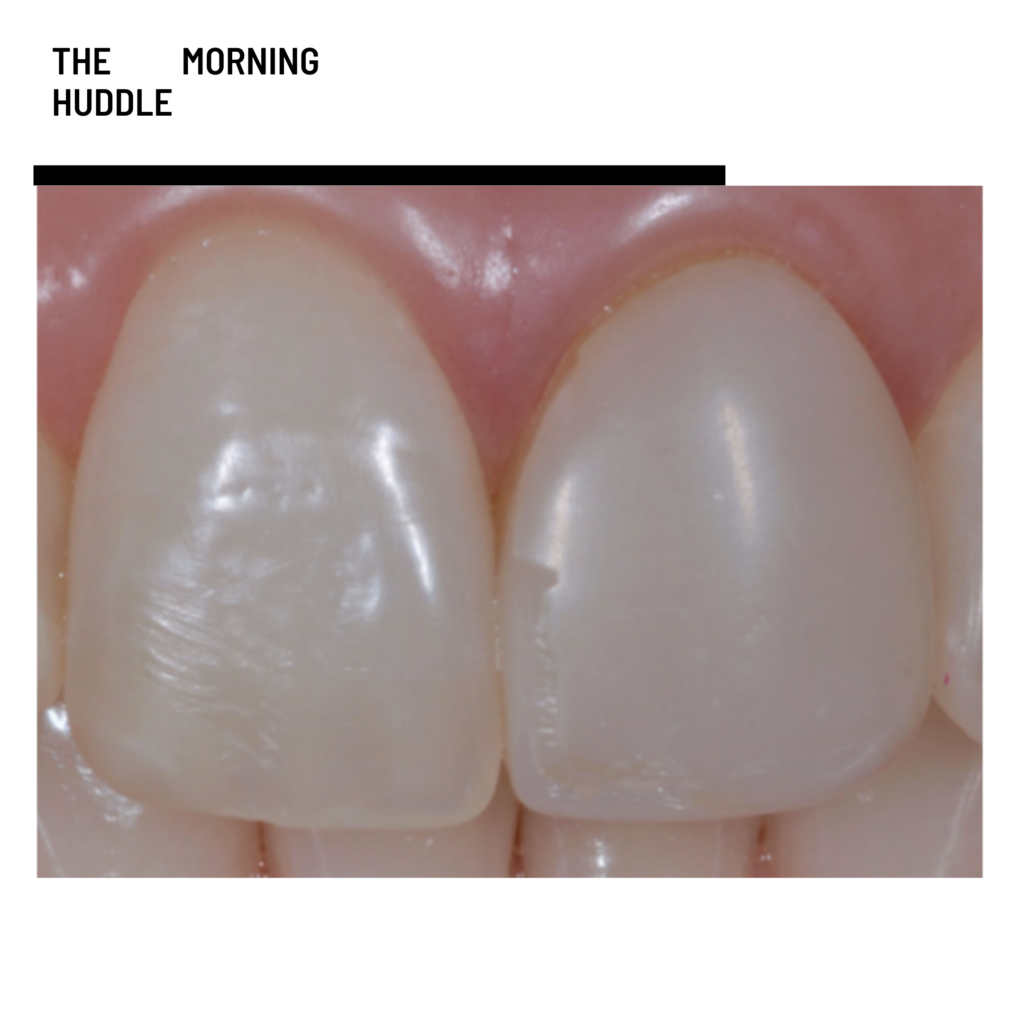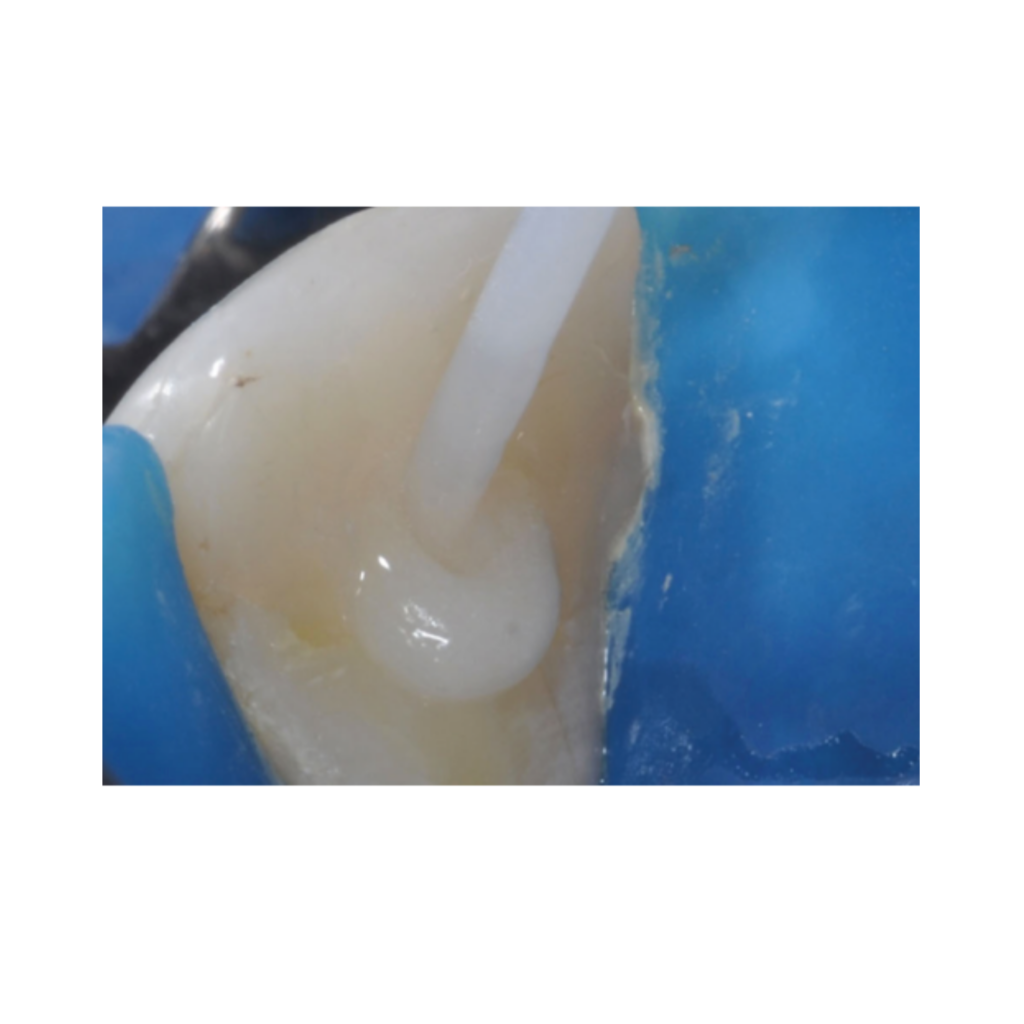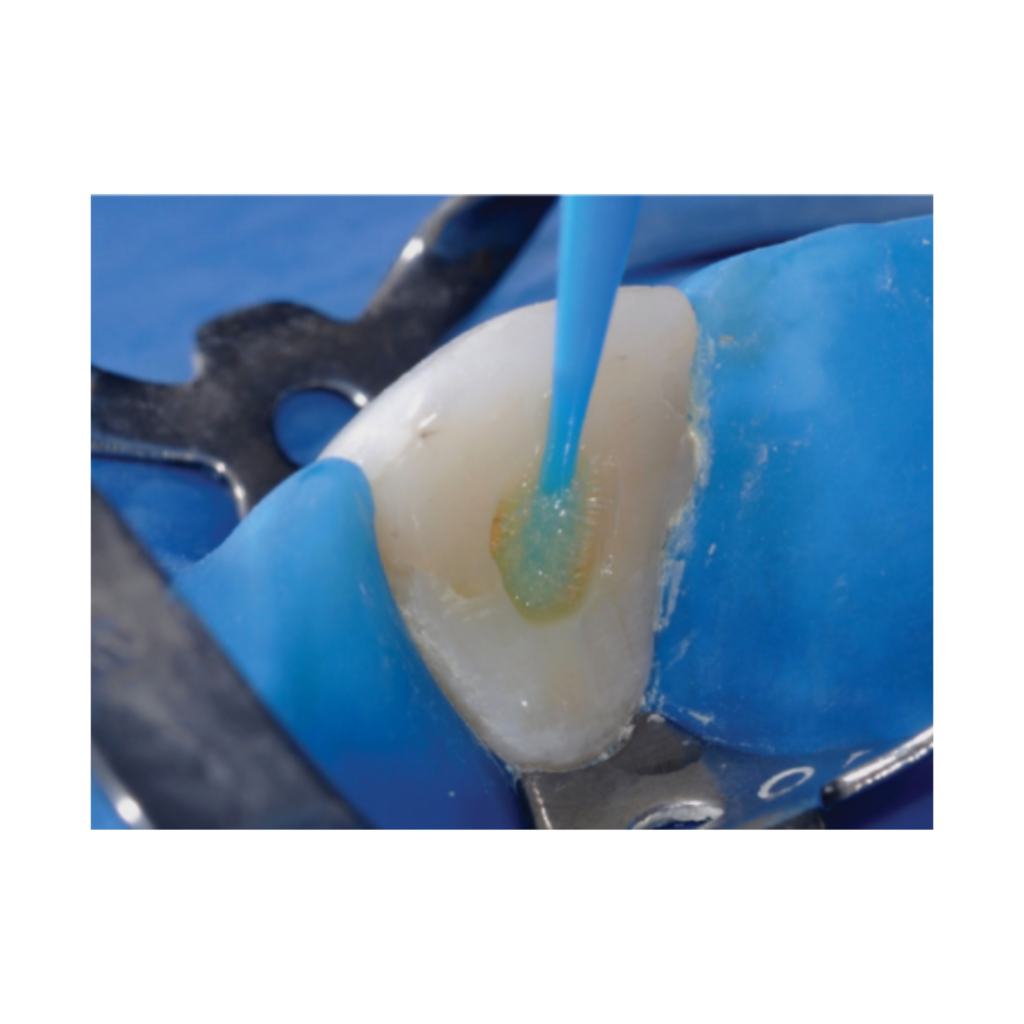When practicing dentistry everyday, we can loose track of the foundational knowledge underlying routine procedures. Today, we hope to refresh your knowledge, by presenting a case that shows percise and clean dentistry.
An endodontically treated tooth most often has a lot of missing tooth structure. The downfalls of cast posts to replace this structure are widely known – usually showing a higher incidence of horizontal and vertical root fractures, most often warranting extraction. Replacing the lost structures of an endodontically treated tooth is most successful with pre-fabricated glass fiber posts. With advancement in adhesives, theses posts show less root fractures and more stability under mastication forces. In some studies, it is even shown that endodontically treated teeth have a higher survival rate with a glass fiber post, compared to no post or a cast post.
In the following case done by Dr. Nunes Reis, we can see how endodontic treatment, post/core buildup and crown preparation can be done in one visit, using a glass post system.
Case presentation
A 24-year-old female presents with a chief complaint of an unappealing shape and color of the upper left central incisor. Clinical examination showed the central incisor restored with a composite veneer with visible margins and inadequate chromatic qualities. On the lingual aspect of the tooth, there was an endodontic access with resin filling. Radiographic examination showed previous root canal treatment, with irregular obturation with voids. The patient was also sensitive to vertical percussion. The patient had good periodontal health.
Treatment
- Endodontic retreatment due to voids and irregularities in the root canal filling material.
- Canal preparation using #2 Largo Peeso Reamer to remove Gutta-percha, and #3 post drill.
- A periapical radiograph was taken to assess the canal preparation and choose a fiber post size. Blue X-post #3 (Dentsply) was selected. The post was cut to correct length with a high-speed diamond bur and cleaned with alcohol. The post was wetted with XP BOND/ Self Cure Activator (Dentsply).
- The root canal walls were etched with 36% phosphoric acid for 15 seconds, and washed for 20 seconds and dried with paper points. The XP BOND/ Self Cure Activator bonding system was applied to canal walls for 20 seconds. The access bonding was removed with paper points.
- Core-X Flow was applied to the post and into the canal space. The post was seated into the canal and light cured for 40 seconds. Excess material was removed using a diamond bur.
Crown preparation of tooth, final impression, and temporization. Final delivery of the crown was scheduled.
This protocol shows a simple and easy to replicate methodology to endodontically treat and restore a tooth in one visit – awarding less chair time and effort.

This MorningHuddle was brought to you by
Dr. José Mauricio dos Santos Nunes Reis, DDS, MS, PhD –
Sao Paulo, Brazil











